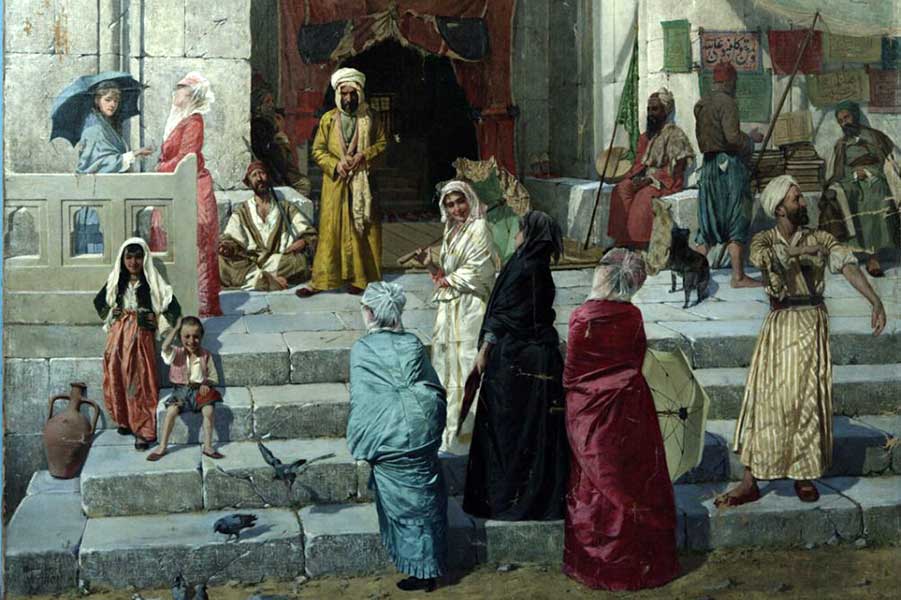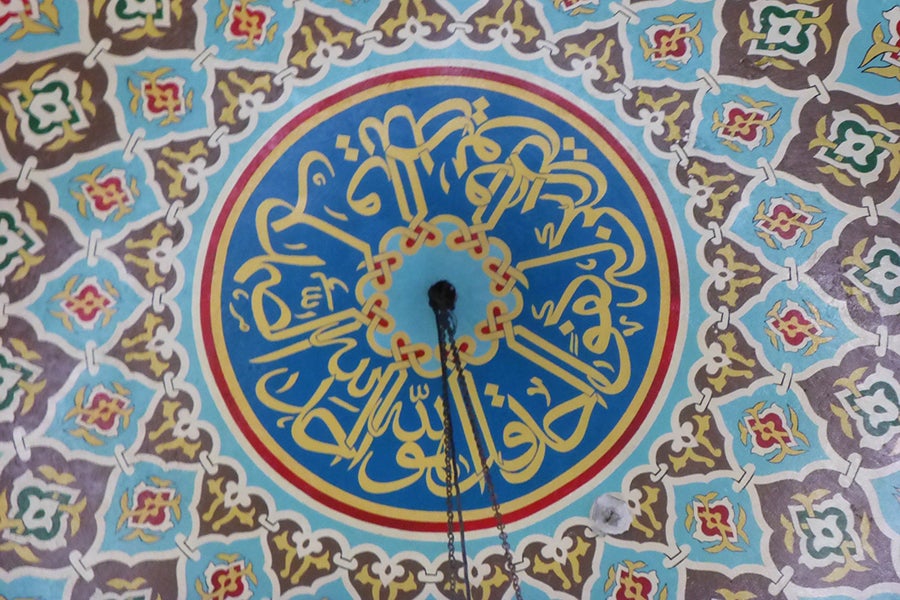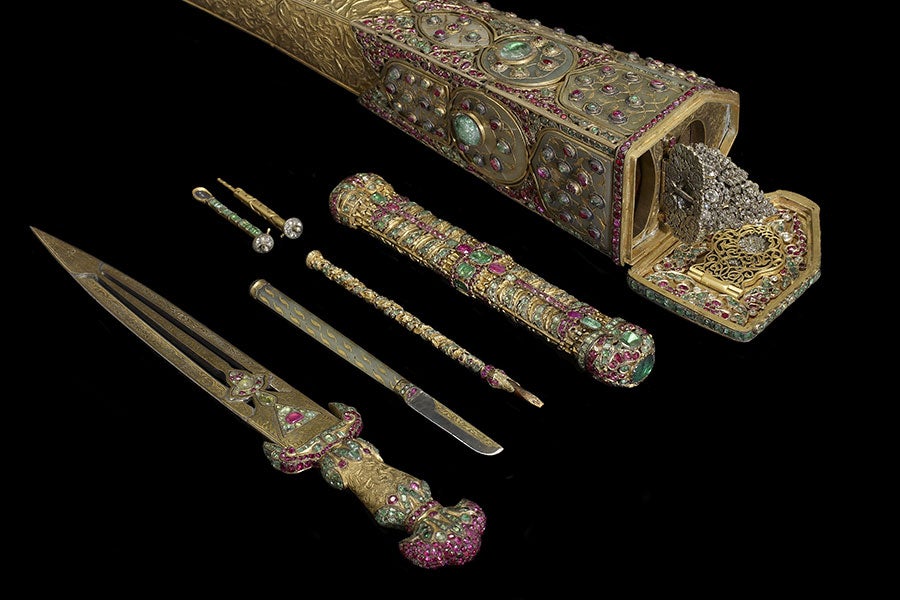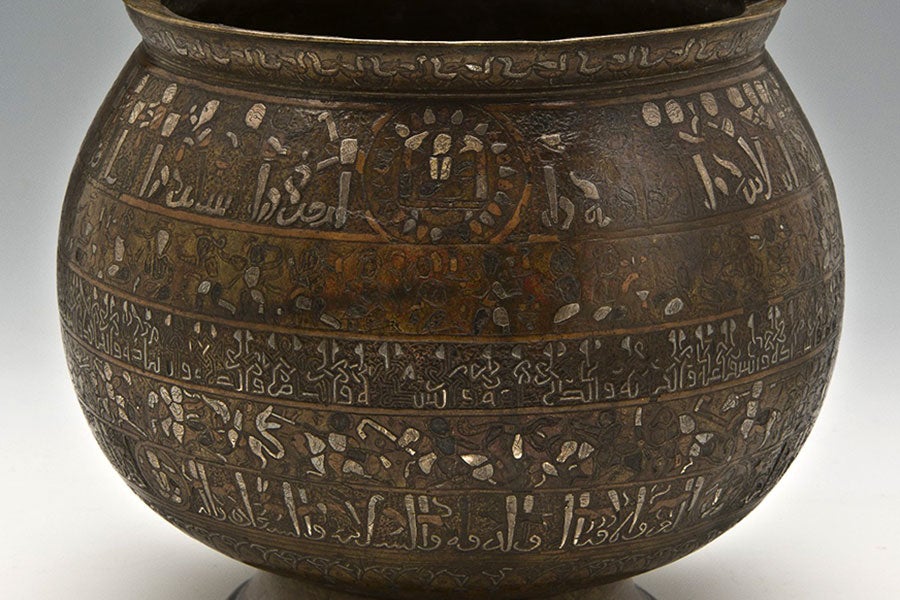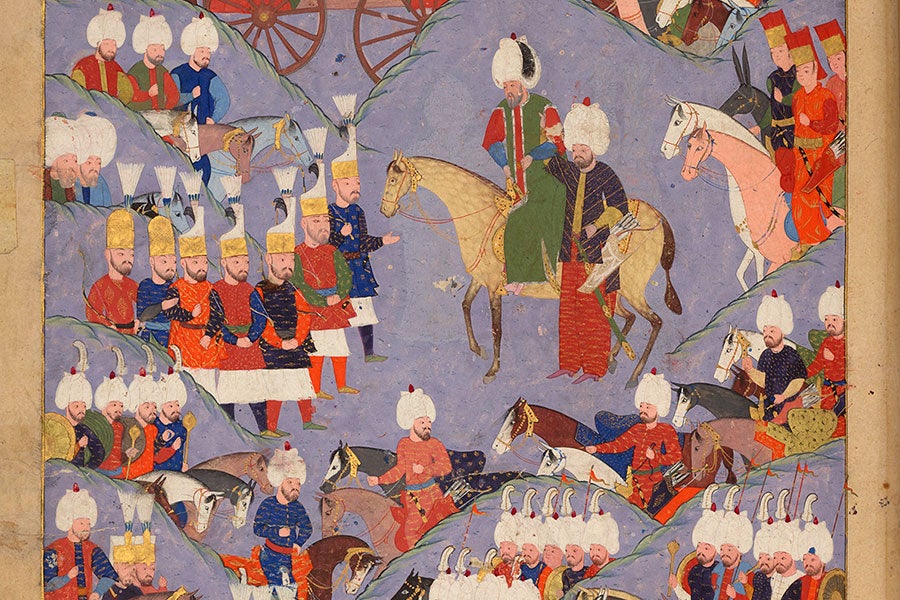A Samanid Epigraphic Dish Marika Sardar Synopsis: Ceramic dishes of the Samanid period (819–1005) are known for the inclusion of epigraphy in their decorative programs. Inscriptions include proverbs praising moral qualities, such as generosity, planning, and wisdom. This presentation explores a Samanid epigraphic dish in the Aga Khan Museum collections and compares its epigraphic contents…
Category: Topics
Al-Aqmar Mosque
Al-Aqmar Mosque Jennifer Pruitt Synopsis: Cairo’s al-Aqmar mosque was founded in 1125 during the reign of the Fatimids. This presentation explores the mosque’s architectural features, façade ornamentation, and Isma‘ili Shi‘i symbolism. Its engagement with already existing structures and streets also highlights a major turning point in the city’s built environment, heralding a new trajectory for…
The Paintings of Osman Hamdi Bey
The Paintings of Osman Hamdi Bey Emily Neumeier Synopsis: Osman Hamdi Bey (1842–1910) is recognized today as the foremost artist of the late-Ottoman period. Yet, in his time, it was also his unique access to the ancient past as the head of Istanbul’s archaeology museum that drew the special interest of his contemporaries in Western…
Monumental Mosques in Latin America: Key Modern and Contemporary Case Studies
Monumental Mosques in Latin America: Key Modern and Contemporary Case Studies Caroline “Olivia” Wolf Synopsis: Although largely overlooked in the study of Islamic art, the architecture of purpose-built mosques and Islamic Cultural Centers in Latin America powerfully negotiate religious space and identity for diverse Muslim communities in predominantly Catholic countries. This presentation provides a brief…
Islamic Art at the Walters Art Museum
Islamic Art at the Walters Art Museum Ashley Dimmig Synopsis: Take a virtual tour of some of the highlights of Islamic Art at the Walters Art Museum (Baltimore, MD) with Ashley Dimmig, Wieler-Mellon Postdoctoral Curatorial Fellow in Islamic Art. Explore a variety of objects in various media—including a stunning jeweled gun—that span a millennium of…
Contextualizing the Hünername (Book of Talents)
Contextualizing the Hünername (Book of Talents) Melis Taner Synopsis: This talk introduces the Hünername (Book of Talents), an illustrated manuscript prepared in the late 16th century at the Ottoman court. This work, composed in Ottoman Turkish by Seyyid Lokman, was conceived in four volumes, only two of which were completed. As a whole, the project deals with…
The Bobrinski Bucket
The Bobrinski Bucket Ruba Kana’an Synopsis: This presentation explores the rich iconography of the Bobrinski Bucket, made in the city of Herat in 559 AH / 1163 CE. It examines the inscription styles and figural scenes that decorate the surface of the bucket, and also explores the twelfth-century innovations in metalwork inlay and decorative techniques…
Ottoman Illustrated Histories
Ottoman Illustrated Histories Emine Fetvacı Synopsis: This talk introduces Ottoman painting through an examination of illustrated histories, which were the most popular works chosen for illustration during the sixteenth century. Through a close study of two manuscripts, we explore why these books were illustrated, what kinds of topics they focused on, and how they were…
The Baths of al-Walid at Qusayr ‘Amra
The Baths of al-Walid at Qusayr ‘Amra Alexander Brey Synopsis: Qusayr ʿAmra (sometimes called Qasr ʿAmra) is an eighth-century bathhouse located in eastern Jordan. Decorated for the Umayyad crown prince al-Walid ibn Yazid before he ascended to the caliphate in 743, the baths are filled with an astonishing variety of figural imagery. Synthesizing work by…
Touching Mecca and Medina: The Dalā’il al-Khayrāt and Devotional Practices
Touching Mecca and Medina: The Dalā’il al-Khayrāt and Devotional Practices Sabiha Göloğlu Synopsis: This presentation explores a double-page painting of Mecca and Medina included in a late eighteenth-century Ottoman copy of the renowned prayer book entitled Dala’il al-Khayrat (Proofs of Good Deeds). This painting is important because it bears traces of devotional engagement with the images…




